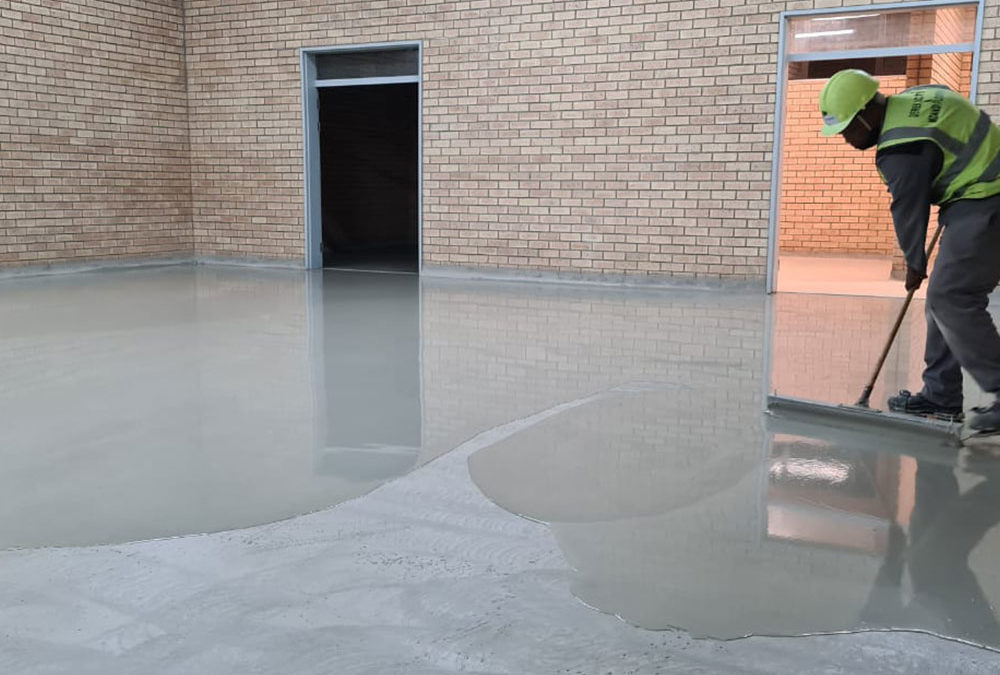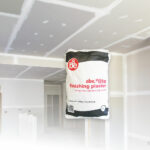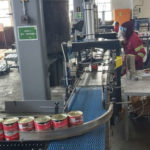Flooring represents the second highest area of litigation in the construction industry, with statistics showing that many industrial floor coverings are likely to fail within the first six months of service. This creates enormous disruption and expense to the client.
Getting the floor right within an industrial facility is critical to ensuring that the site can meet its operational demands alongside health, safety and hygiene requirements as well as compliance with industry standards.
- The demands placed upon the floor surface and the resilience of the material itself are often underestimated until it is too late. Understanding the reasons or triggers that can lead to floor failure can help prevent such instances from ever occurring.
- The surest way to avoid floor failure is to take the necessary steps at the material specification stage to prevent the problem from occurring in the first place by selecting fit-for-purpose, durable floor systems taking into consideration the performance specifications that have been designed to meet the operational demands of the individual environment.
Testing and specification
During the specification process, the architects, designers and facility operators should consider what extra benefits could be added to the finish. For example, considering the finish in terms of risk management is critical in wet service areas, as is ensuring the flooring system is tested under these conditions to determine if it will provide the correct level of safety.
Common mistakes
Some of the most common mistakes to be avoided during the specification stage include choosing a finish based only on its visuals, picking the cheapest option, simply using the same system as before and paying little attention to the substrate or the practicalities of the site’s future use. Falling into any one of these traps could result in the application of an inadequate floor that will crack, crumble and fail when faced with the site’s day-to-day demands.
Also, the lack of assessing the below concrete surface bed or concrete sub-bases is a common area of errors as the selected flooring system is dependent on sound adhesion and reliant on firm compressive strengths for selected flooring systems.
So what are the common mistakes and problem areas industry experts encounter?
a.b.e.’s® says that they often encounter:
- Floor spalling in high traffic zones.
- High traffic in parking facilities.
- Chemical contamination of exposed concrete.
- Poorly maintained coatings and systems.
- The wrong product being specified from the onset.
- Limited maintenance with regards to joints/jointing resulting in floor failures on new/existing flooring systems.
In addition, it is important to note:
Existing/New substrates in poor condition or not of a suitable standard for application of the chosen floor covering is a common problem.
- Oil and protein contaminated substrates, where refurbishment usually requires multiple stages of preparation/repair to ensure the new coating bonds onto the substrate over the long term.
- Osmosis caused by hydrostatic pressure is a common problem when installing coatings over existing and new factory floors.
- Existing coatings that have been poorly installed or are inadequate for the relevant service environment.
- Moisture problems on existing flooring must be managed as these floors can deteriorate thus failing over time becoming a health and safety issue not complying with certain industry standards.
Where then do things still go wrong?
Our panel of industrial flooring experts agree that mistakes happen because of:
- Surface contamination leading to delamination of the floor covering, resulting in a failed installation.
- Using a weak substrate or where a substrate has a high moisture content.
- Incorrect product specifications. For instance, when PU’s are incorrectly specified instead of epoxies in a motor vehicle workshop and epoxies are specified instead of PU’s in cold rooms.
- Using products from different suppliers without confirming that they are compatible with one another.
- Not paying careful attention to the manufacturers’ recommendations.
- Not selecting the right applicator. This is crucial because industrial flooring systems should be installed by highly experienced flooring contractors who take into consideration the technical aspects of each installation, including product and floor temperatures, ambient conditions, protecting the floor from direct sunlight and wind, mixing methods, open times and not exceeding the pot life of the specific product being used.
- Attention to the correct tooling is also critical in the application process of the installation process of new and existing flooring systems being installed, attention to product yields are directly dependent on correct tooling directly related to performance specifications.
What are the key considerations when specifying industrial flooring?
- Consider the industrial setting. Will the floor have to withstand chemical abuse from a variety of substances including water, dust, fuels, sanitizers, acids, lubricants, and in certain industries, by-products from foodstuffs including sugars, hot oils, blood and grease? If left unchecked, chemical attack can degrade not only the finish but can eat into the concrete substrate and affect the soil underneath.
- The temperature of the chemical contaminants or harmful substances. For example, grease is fairly inert at room temperature but highly corrosive when heated to high temperatures.
- Nature of exposure to which the floor will be subjected. This is typically categorised into three degrees: immersion, intermittent spillage or infrequent contact. A full risk audit should provide an idea as to how many chemicals or corrosive substances a floor is likely to encounter during its lifetime.
- Mechanical abuse from equipment being moved, tools being dropped, pallets dragged across the surface, as well as rubber and neoprene wheels used on forklift and pallet jack equipment. Anticipated traffic loadings need to be accounted for – a fully loaded hand pallet truck could weigh more than a ton. When repeatedly moved, this will increase the load pressure through the small wheels and into the floor, especially over areas where it is being pulled in a tight turning circle.
- The compressive strength of the floor system can be used to determine the suitability of the floor to the task at hand. In the hand pallet truck, scenario mentioned previously, compressive strength of at least 40-50 N/mm² would be required.
- Factories must undergo punishing clean and wash down processes that can involve extremely hot water or even steam to remove fuels, grease and other chemical contaminants. However, many plants operate at ambient room temperatures and therefore, during cleaning and wash down processes, become subject to thermal shock as the floor is suddenly exposed to temperatures of more than 180°C.
- Hard floors based on epoxy, vinyl or MMA chemistry are not equipped to deal with thermal shock conditions and as a result, can crack or delaminate when exposed to extreme temperature swings, weakening the surface and invariably leading to the early onset of floor failure.
- Thermal cycling can also be problematic. This is when the temperature is slowly or seasonally lowered or raised because of climatic or service conditions as well as periodic cleaning programmes. Again, this process could irreparably damage materials.
- Getting the concrete slab or underlying substrate right is critical to an effective floor finish. Poor substrate preparation is one of the leading causes of delamination, which will occur if the concrete is too smooth, if the laitance has not been removed or if there is a substance or reason why the resin coating cannot effectively bond to the substrate.
- The substrate’s pH levels and moisture content can wreak havoc on the floor if not addressed at the material specification stage. Concrete is, to some degree, permeable and will absorb moisture from the ground, particularly if it is low grade or located close to a high-water table area. In addition, new concrete typically has a remarkably high moisture content until it fully dries out. This means that the substrate’s moisture level should be thoroughly analysed during the specification stage, and if the cyclical moisture levels are too high, then a damp-proof membrane (DPM) should be applied as well as suitable moisture barriers considered prior to installing flooring systems.
A DPM works by smoothing out the transition of moisture vapour through the floor. Without this, the moisture would rise unevenly and cause blistering or de-bonding in the resin finish. Consideration of moisture barriers should be investigated as precautionary measures in this case.
- In wet service environments, it is essential that flooring is laid to falls so that excess liquid flows towards the drainage system to prevent the pooling of water and lessening the risk of slips.
- Resin flooring is available in a range of textures and can be graded with broadcast aggregates to increase its anti-slip profile. It is important to note that coarsely textured surfaces are more difficult to clean than smoother finishes, therefore a compromise may need to be made where heavy slip resistance and ease of cleaning are both of critical importance.
FLOORS in Africa says, “Experience has taught us that a well-prepared substrate, combined with a coating that is installed at the correct film thickness, and in the correct service environment, will surpass the life expectancy of the new floor covering.”
a.b.e.® urges that where a floor is suspect due to failure, the customer should be advised to replace the entire floor. While this may result in a loss of sales, earning the customer’s trust is more important than securing future business.
Final word
Budget constraints
Often budget constraints or the incorrectly specified resin floor covering can lead to high maintenance costs or problems with the overall performance of the floor once the installation is complete. If a coating is too thin, it will simply underperform, and repairs to the floor whilst the facility is in operation can prove to be very difficult due to lack of access or keeping the area clear for the required amount of time, amongst others. In new facilities, it is especially important to invest in the right system at the onset, as this will ensure that the substrate is protected from contamination or other damage.
Specifying and installing a complete industrial flooring system may cost more at the outset, but the downstream savings are clear. Beyond the cost of the initial installation, the costs of remedial work are exponential, as is the time factor when required to remove the failed floor covering, repair or start the project all over again.
When deciding which floor is right for your facility, it is important to discuss all the relevant factors with both a supplier and applicator that have experience creating floors in similar situations. It is also advisable to visit other facilities to see how different types of floors have stood up to comparable conditions, and if possible, install a sample within your facility to put through its paces before committing to a complete coating.
Source: Media in Africa












